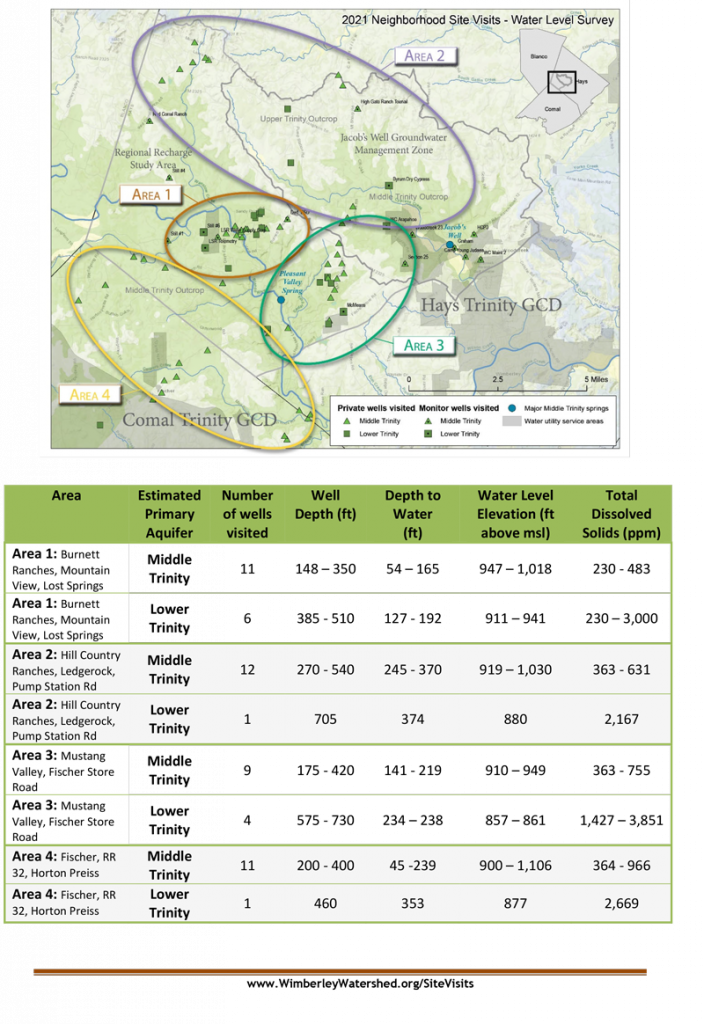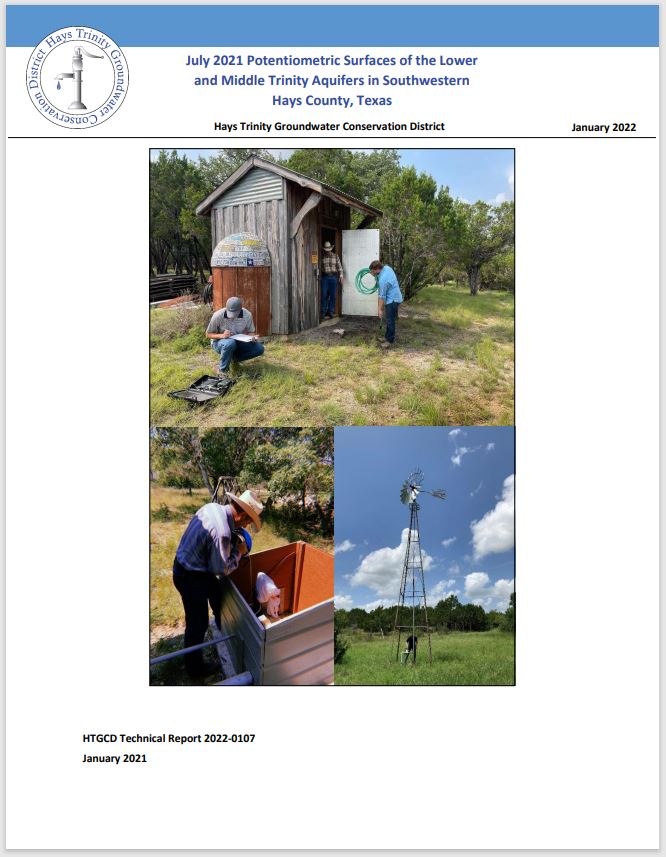
The scientific report documenting the summer 2021 well visits is now available. The Lower Trinity and Middle Trinity Aquifer potentiometric surface maps presented in this report are indices for aquifer health and characterize Trinity Aquifer flow regimes in-depth. The maps provided are compared to previous studies and will be valuable timestamps for future studies. Additionally, basic water chemistry data were collected for both aquifers during this study and are discussed in this report.
During summer 2021, the Watershed Association teamed up with the Comal Trinity Groundwater Conservation District and the Hays Trinity Groundwater Conservation District and visited over 60 private wells in northern Comal County and western Hays County.
Many thanks to all participating well owners! It is our hope that the measurements made during the site visits were useful to individual well owners. The data collected allow for a comprehensive regional snapshot of aquifer conditions in both the Middle and Lower Trinity Aquifers.
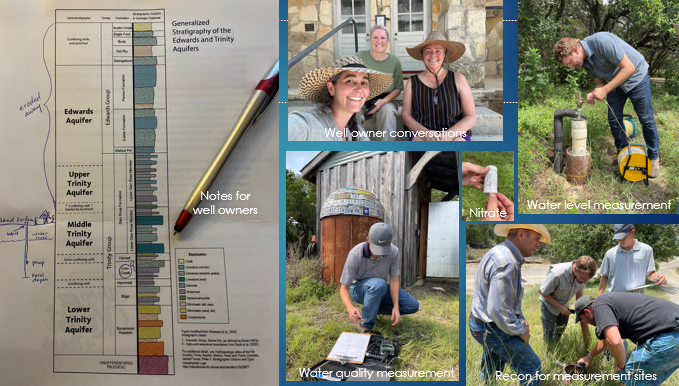
During the well visit, staff took a water-level measurement (if possible), and screened water samples for nitrates, pH (acidity) and total dissolved solids (TDS, “saltiness”). An explanation and summary of results is below.
Water-level measurements
We estimated water levels with a hand-held sonic meter, and when possible, we verified the measurement with an eline. We were able to take eline measurements at 37 of the 55 individual wells visited during Site Visits. Combined with measurements made at monitor wells, we were able estimate the primary aquifer and document water levels at 61 Middle Trinity and 21 Lower Trinity wells. A map of sites visited is below.
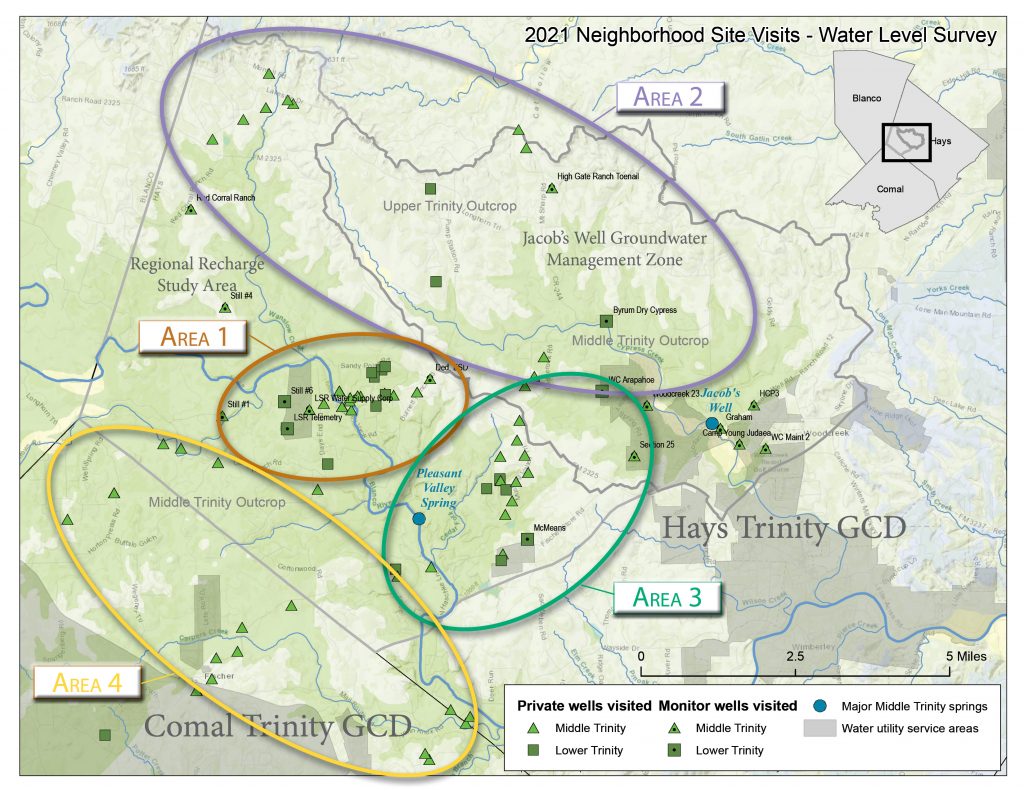
This water level snapshot will help ensure that monitoring networks are representative of water levels in the neighborhoods and document groundwater conditions. HTGCD staff converted the depth-to-water measurements to water-level elevations to be able to analyze water levels regionally. The analysis will be presented to the HTGCD Board at the regular October board meeting and documented in a publicly accessible report. These data will be useful as we track long-term water level changes due to drought and wet periods.
Water-quality measurements
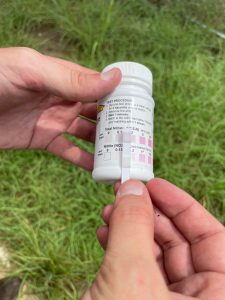
Staff used nitrate/nitrite test strips to screen for a surface water contaminant. The EPA sets primary standards for contaminant levels in drinking water that can endanger human health. High levels of nitrates can indicate contamination by fertilizer, septic systems, or livestock or wildlife feces and would indicate there is a direct surface water connection to the well. Some of the water samples analyzed did contain detectable but low levels of nitrate, but all were below the maximum concentration of 10 parts per million (ppm) deemed acceptable for drinking water by the EPA. All nitrite results were below the EPA standard of 1 ppm.
If you ever notice a change in color, taste, or smell, you should have your well water analyzed by an accredited lab. The US EPA and many groundwater conservation districts recommend private wells be tested annually to ensure the water remains safe for use. As a private water system owner, you are responsible for making sure your water is safe for use.
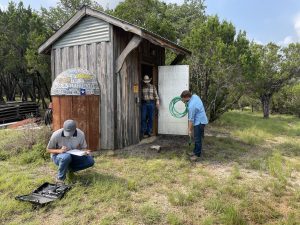
Staff used a Horiba multiparameter probe to measure basic water-chemistry such as pH, conductivity, and total dissolved solids (TDS). PH is a measure of how acidic or basic a liquid is. Traditionally, in limestone-dominated aquifers, pH is buffered close to neutral (7). Conductivity is a measure of how easily electricity can pass through a sample; the more dissolved particles in the water, the higher the conductivity. As water is stored underground, it dissolves particles from its host rocks. How long the water has been underground and how easily the host rock is dissolved influences the conductivity readings. Conductivity can be used to estimate Total Dissolved Solids (TDS). The EPA sets Secondary Standards for contaminants that affect the aesthetic quality (taste, odor, clarity) of drinking water. The EPA Secondary Standard for TDS in drinking water is 500 mg/L or less. Generally, water over 1,000 mg/L is considered brackish or salty. Trinity wells frequently exceed this secondary standard.
